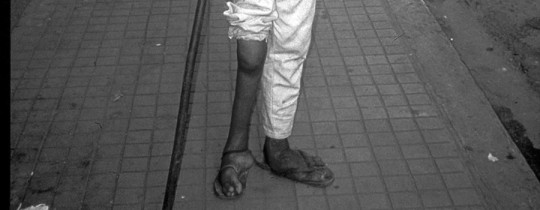Polio

Polio is an infectious disease that has been around since the time of the Ancient Egyptians, although the first official diagnosis of polio was made in 1789. It is caused by a virus that attacks the body’s nervous system, causing paralysis in only a few hours. In between 5 and 10% of all cases of paralysis, polio results in death when the virus incapacitates the muscles that control someone’s ability to breathe.
In the United States, the last recorded case of polio occurred in 1979. Thanks to a polio vaccination that has been successful in eradicating the disease in developed countries, it is no longer considered a threat to public health. The World Health Organization (WHO) estimates that polio cases have decreased by more than 99% in the last two decades. However, polio still affects children in some developing countries, such as Pakistan, Afghanistan, and Nigeria, which are still considered polio-endemic.
Symptoms
In most cases, people who become infected with the polio virus don’t actually become sick. In fact, there are hundreds of people who contract the disease and never actually know it. Others contract what is known as non-paralytic polio. As the name suggests, it is a type of polio that does not lead to paralysis. Symptoms are similar to the flu or the common cold, and can include: headache, vomiting, sore throat, fever, tiredness, pain and stiffness in the back, neck, arms, or legs, meningitis, and muscle spasms. In general, symptoms last around 10 days.
Paralytic polio, on the other hand, is more serious. It is categorized according to the part of the body it affects: the spinal cord, the brain stem, or both. In each case, progression of the disease begins with the same flu-like symptoms listed above. Not long after,symptoms worsen and can include severe muscle aches, muscle spasms, loss of reflexes, and loose limbs.
Causes
Polio is an illness that is unique to humans. It is passed through infected feces and ingested orally. Even in cases of people who don’t show any symptoms, the virus is present in their feces and can infect others without their knowing it. Transmission can easily occur in areas where sanitation is a problem. When water or food becomes contaminated through matter from an infected person, someone can ingest the disease.
Polio is also transmitted through direct contact with someone who has the disease. When people live together in cramped spaces, the disease is also likely to spread. Those who haven’t gotten the polio vaccine are at the greatest risk of contracting the disease.
Prevention
Polio can be prevented by both adequate sanitation and personal hygiene practices. However, the vaccine, called IPV, is far more effective in preventing the disease. In the U.S., children are immunized from infancy at the early age of two months. The vaccine is administered in four doses total. According to the WHO, the vaccine is 99% successful at preventing polio when even three doses are given. When two doses are given, it is 90% successful. The vaccine is safe for most people, including those with compromised immune systems.
There is also an orally-administered version of the vaccine available. Although it is less effective overall, it is also less expensive and simple to administer and has therefore been an impetus in preventing polio in many countries around the world.
Treatment
Polio is a disease that currently has no cure. Treatments therefore focus on providing sufferers with relief from painful symptoms, decreasing recovery time, and preventing future complications of the disease. These treatments include analgesics to minimize the pain caused by the polio virus, antibiotics to prevent future infections, good nutrition, and moderate exercise. Doctors usually prescribe bed rest to patients for a period of time in order for them to recover fully.
In cases of severe polio, the focus is on solutions for the long-term. Physiotherapy, leg braces or back braces, orthopedic shoes, surgery, and occupational therapy can all help victims of polio to live with physical disabilities caused by the disease. When breathing is a problem, treatments include portable ventilators and negative pressure ventilators.
